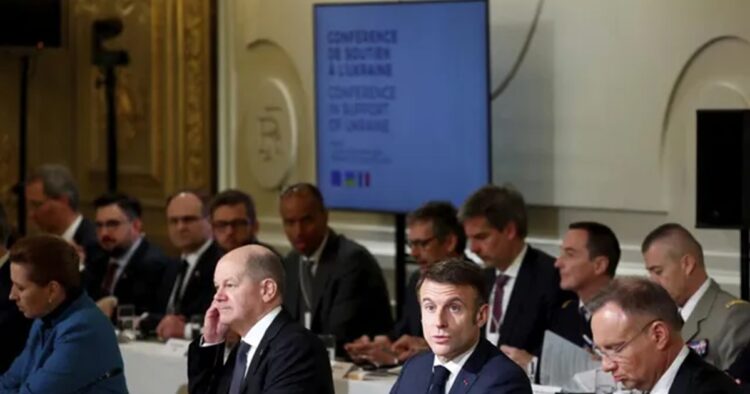In a recent development, key European military powers, including Germany and Poland, have firmly stated their stance against sending troops to Ukraine. This decision comes amidst reports suggesting that some Western nations were considering military intervention as the conflict with Russia enters its third year.
The NATO alliance, led by the United States, has also declared that it has no intentions of deploying troops to Ukraine. This announcement aligns with similar declarations from other Central European leaders, indicating a unified stance against direct military involvement.
The Kremlin has issued a stern warning, stating that any deployment of NATO combat troops to Ukraine would inevitably lead to conflict. Kremlin spokesperson Dmitry Peskov emphasized the seriousness of such actions, emphasizing the potential for escalation between NATO and Russia.
The discordant views emerged after a conference hosted by French President Emmanuel Macron, where discussions regarding Western ground troop deployment were held. However, German Chancellor Olaf Scholz clarified that the consensus among participants was against sending soldiers to Ukraine, reiterating the commitment to refrain from active involvement in the conflict.
France, initially supportive of the idea of sending troops, faced backlash domestically, prompting clarification from French officials. French Defense Minister Sébastien Lecornu emphasized that discussions at the conference revolved around non-combat operations such as de-mining and military training, rather than direct involvement in warfare.
The prospect of deploying troops remains a contentious issue, particularly given NATO’s reluctance to be drawn into a broader conflict with Russia. While individual NATO members may choose to provide support independently, the alliance itself has no plans for combat troop deployment in Ukraine.
Amid concerns over waning U.S. support and the potential for policy shifts under former President Donald Trump, European nations are seeking to bolster Ukraine’s defense capabilities through alternative means. Bilateral security agreements and initiatives to procure military equipment outside the EU are among the measures being pursued to support Ukraine.
In the face of Russia’s aggression against Ukraine, European nations reaffirm Ukraine’s right to self-defense. While ruling out direct military intervention, NATO Secretary-General Jens Stoltenberg underscored Ukraine’s right to defend itself, with some member states providing weapons and ammunition to support this effort.
As tensions persist between Russia and Ukraine, the international community remains vigilant, navigating a delicate balance between supporting Ukraine’s defense and avoiding further escalation of the conflict. The recent developments highlight the complexities of the situation and the challenges in finding a peaceful resolution to the ongoing crisis.

















Comments